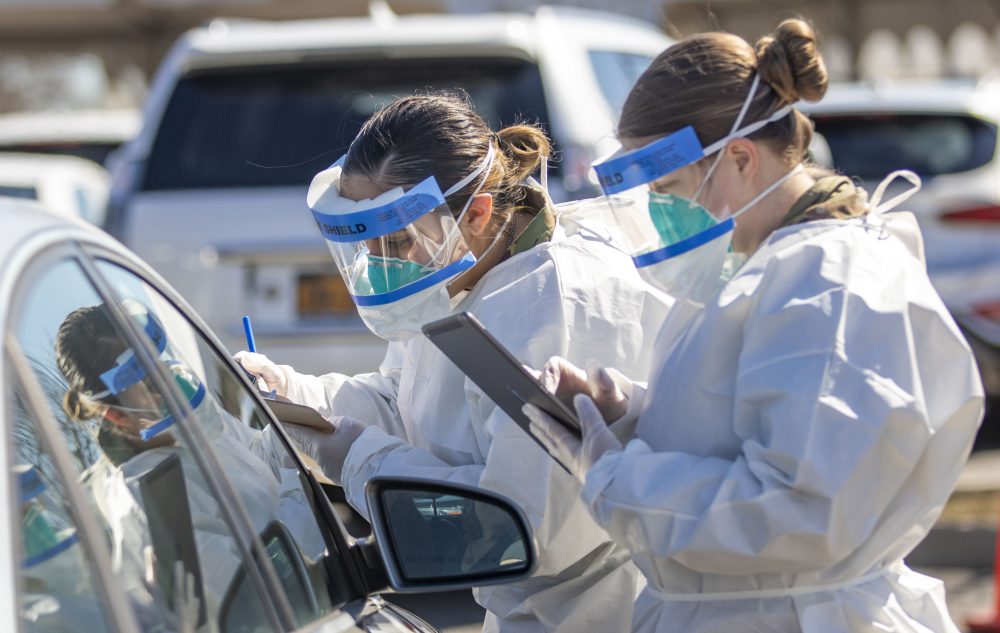
Last updated:
COVID-19 Coronavirus

Overview
In late December 2019, people in Wuhan, China began to get sick with a previously unknown pneumonia, marking the beginning of a new infectious disease, later identified as a new type of coronavirus and named SARS-CoV-2. The disease the virus causes was named coronavirus disease 2019 (COVID-19) by the World Health Organization (WHO).
WHO declared the COVID-19 outbreak a Public Health Emergency of International Concern (PHEIC) on Jan. 30, 2020, and a pandemic on March 11, 2020. The WHO lifted the PHEIC for COVID-19 on May 5, 2023. The US ended the federal COVID-19 Public Health Emergency on May 11, 2023.
From December 2019 to Aug. 4, 2024, there have been nearly 780 million cases of COVID-19 and almost 7.06 million deaths worldwide. Health policy organization KFF maintains an updated COVID-19 tracker here.
This profile is not regularly updated.
(Photo credit: U.S. Army National Guard photo by Sgt. Amouris Coss)
Latest Updates

What we’re watching: Weekly disaster update, August 19

CDP announces $510,000 in grants to support COVID-19 recovery in the US

What we’re watching: Weekly disaster update, January 17
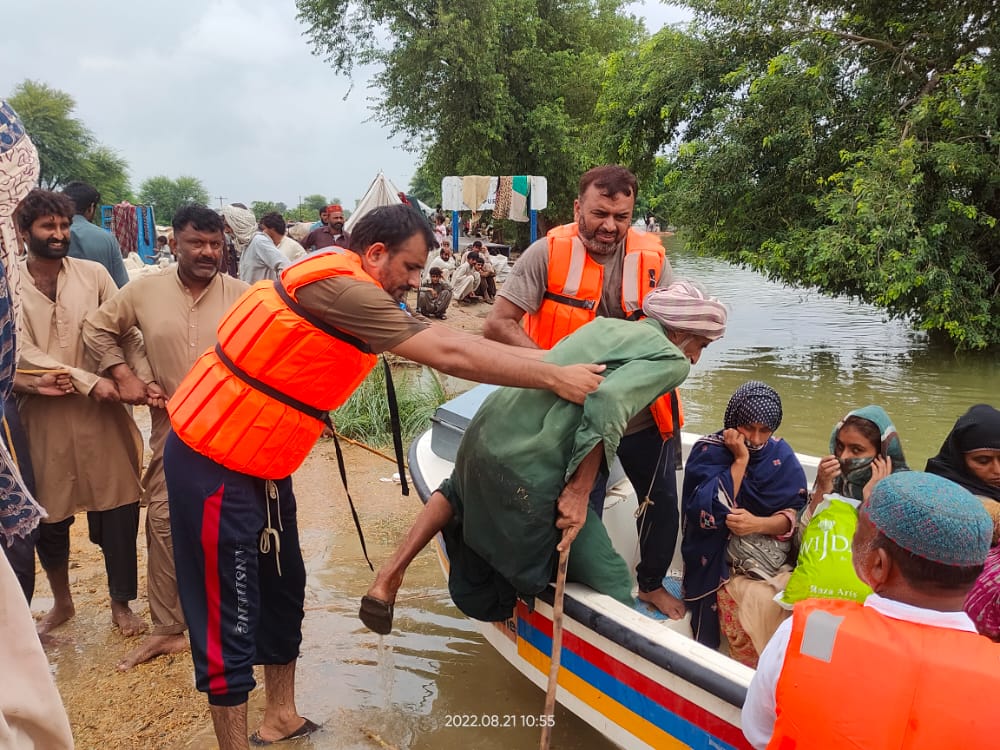
What we’re watching: Weekly disaster update, August 29

What we’re watching: Weekly disaster update, August 22
Key numbers
Domestically, home testing kits have reduced the effectiveness of most tracking systems. Since most home tests are not reported to health authorities, the most effective means of tracking COVID-19 in a community is by testing the presence of the virus in wastewater,
All countries and territories have reported cases of COVID-19, except Turkmenistan which has never reported a single case, although it did claim to experience a ‘unique pneumonia’ beginning in 2020.
Since nearly the beginning of the pandemic (Spring 2020), the United States has led the world in the number of cases and deaths. Our World in Data says, “Due to limited testing, the number of confirmed cases is lower than the true number of infections.” Despite this, as of Aug. 4, 2024, they report that the U.S. has had at least 103 million cases. The next five countries by caseload are China (99.73 million cases), India (45.04 million cases), France (39 million cases), Germany (38.44 million cases) and Brazil (37.5 million cases).
The U.S. has experienced 1.19 million deaths, followed by Brazil (702.12K), India (534K), the United Kingdom (232.11K), Germany (175K) and France (168.1K).
Not all countries have been able to maintain accurate tracking of cases and deaths. One method of tracking that adjusts for these limitations is known as ‘excess mortality’. This method compares the number of deaths occurring during a specific incident with the average number of deaths in the same period. Similar methods are used for tracking deaths during natural hazards, including heat and hurricanes. Our World In Data authors Giattino et al say this can be explained as “Excess Deaths = Reported Deaths – Expected Deaths.”
Between Jan. 1, 2020, and Dec. 31, 2021, there were 5.45 million confirmed deaths globally. Two excess mortality studies (The Economist and WHO, using different methods of analysis) rated the number of deaths in that period as falling between 12.5 million and 19.3 million – a difference of up to 13.85 million more deaths than ascribed to COVID-19. The WHO study found that there were 2.74 times more deaths than reported as due to COVID-19. A comprehensive U.S. study found that between March 2020 and August 2022, there were 1.2 million excess deaths, with 163,000 of these not having COVID-19 listed on the death certificate.
Vaccines
- The creation of vaccines to fight the virus marked a significant turning point in the rate of deaths and infections.
- The first vaccine was given on Dec. 8, 2020.
- As of Aug. 14, 2023, 71% of the world has received at least one COVID-19 vaccine dose.
- Many people in low-income countries were dependent upon external programs for vaccine access, especially COVAX (which shut down in December 2023) and Gavi (for 2024 and 2025). COVAX is estimated to have prevented 2.7 million deaths and helped lower-income economies come within 10% two-dose vaccination coverage as the global average (57% compared to 67%).
- Gavi, the Vaccine Alliance, has received requests for 83 million doses from 58 economies in 2024.
- More than 13.58 billion vaccine doses had been administered to fight the virus as of Aug. 14, 2024.
Summer 2024
- More than 4.5 years into the COVID-19 pandemic, the virus and its newest variants are making a resurgence in many parts of the world, including New Zealand, the U.S., China, South Korea and at the Paris Olympics.
- While summer increases have happened annually, 2024 brought the largest summer wave the U.S. has seen in two years, and the trend is expected to continue into the fall.
- Confirmation of the number of cases is imprecise, relying on wastewater surveillance, but testing shows unusually high rates of the virus in wastewater.
- Excessive heat this year is suspected to have pushed more people indoors, and three variants are causing 70% of all cases in the U.S.
- The Food and Drug Administration is considering approval for new vaccines targeting the KP.2 variant and possibly the JN.1 strain.
- The LA Times says, “The FLiRT subvariants have been the major culprits behind this summer’s COVID spike, with one in particular starting to flex its hyper-infectious muscle. KP.3.1.1 is now the single most common coronavirus strain circulating nationwide, constituting an estimated 36.8% of specimens for the two-week period that ended Saturday, up from 12.7% a month ago, CDC data show.”
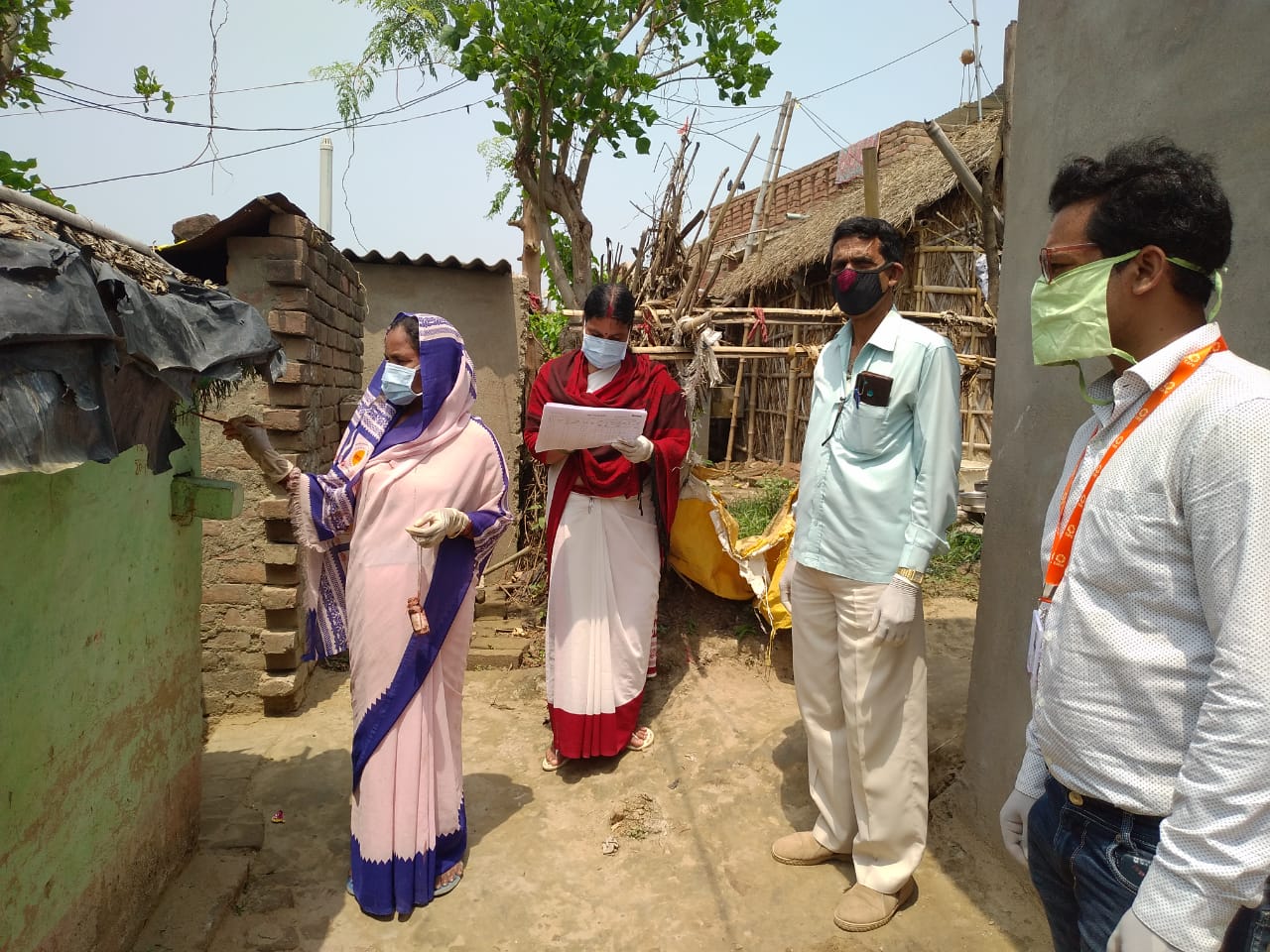
Both the WHO and the U.S. have ended their public health emergencies related to COVID-19. Yet, the virus continues to spread across the world, despite the implementation of vaccines. The vaccine disparity continues to highlight the inequities around the globe.
In the U.S. and other Global North countries, the intentional disinformation/misinformation campaigns will continue to leave many people unvaccinated and at-risk. The virus is continually mutating. There is a risk with each new mutation that a strain will be created that is vaccine-resistant. All of these factors create a climate and case for ongoing philanthropic support.
Funders can help in the following ways.
Provide access to timely, accurate and appropriate information
Many people around the world do not have accurate information about COVID-19 – specifically vaccine access. People have the right to unrestricted access to accurate and timely information so that they can make informed decisions about their health.
Even in the U.S., there is significant misinformation about the virus and vaccines. This rhetoric has been spurred by conspiracy theorists and people with a vested interest in distributing false stories. The Public Health Collaborative’s Misinformation Alerts are a great way to stay informed about the truth.
Funders can explore opportunities to combat misinformation by supporting public health campaigns aimed at changing policy and/or delivering accurate and accessible information.
The Joint Research Centre at the European Commission says research shows that, “information campaigns should present epidemiological evidence (the current status of the pandemic and the likelihood of future waves) through trusted channels and in a clear and understandable manner. Furthermore, policymakers should acknowledge the differences in beliefs and perceptions between sub-groups of the population (for example, as explained in the brief, between vaccinated and unvaccinated), and tailor their messages accordingly. Doing so helps challenge inaccurate perceptions created by targeted mis- and disinformation on such topics.”
Support programs to address COVID-19 vaccine hesitancy and equitable access to vaccines
There are significant concerns about the equitable distribution of COVID-19 vaccines both in the U.S. and around the world. On an international level, this means continuing to support sufficient production and distribution of vaccines, supporting the medical infrastructure and building vaccine awareness. Help ensure vaccine confidence is built in communities and vaccine hesitancy is addressed to increase uptake.
While vaccine rates have improved in many countries, programs designed to prevent and limit transmission should continue to be prioritized, particularly in fragile countries and countries with weak health systems and infrastructure. Supporting a strong health system continues to be critically important. This includes ensuring adequate supplies of personal protective equipment (PPE), clean syringes and injection supplies, training for personnel and staffing needs.
Fund mental health/psycho-social support/physical health
Serious mental health needs emerged throughout the pandemic.
KFF, a health policy organization wrote, “The pandemic has affected the public’s mental health and well-being in a variety of ways, including through isolation and loneliness, job loss and financial instability, and illness and grief.” They also reported increased rates of suicide, depression, anxiety and substance misuse.
At the beginning of the pandemic, lockdowns created increased sedentary behaviors, affecting weight gain, mental health and a reduction in physical fitness.
During the pandemic, there was also a decrease in basic childhood vaccinations, especially in low and middle-income countries. Research showed that in the first three years, 67 million children missed at least one dose of a standard vaccine panel.
In the U.S., misinformation and vaccine hesitancy has meant childhood vaccinations have not achieved pre-pandemic levels. In fact, 10 states in 2024 have such high kindergartener vaccine exemption rates, that it is impossible for them to reach the Healthy People 2030 target of a 95% vaccination rate. This has resulted in increases in preventable, and in some cases, mostly eradicated diseases, including measles and polio. A 2023 study found that measles cases doubled between 2021 and 2022, while children paralyzed by polio increased 16%.
Funders can support organizations providing culturally appropriate access to mental health/physical health services for those of all ages. Additional support is needed for survivors of trauma from the pandemic and the layered traumas of other life circumstances exacerbated by the pandemic.
Additionally, services that help people find and access mental health and physical health resources, known as navigation services, and support for organizations providing mental health support and services to frontline healthcare workers to mitigate burnout also need support.
Education
COVID-19 dramatically increased learning poverty, which “is defined as the percentage of 10-year-old children who cannot read and understand a simple story.”
World Bank data “produced jointly with the UIS show that 53 percent of 10-year-old children in low- and middle-income countries cannot read and understand a simple story. In the poorest countries, the number is often close to 80 percent.”
At least 147 million children missed half their schooling between 2020 and 2022. Some students never went back, while many who returned to school did not learn enough to exceed the learning poverty markers. In 2022, learning poverty was highest in Sub-Saharan Africa, but rising fastest in South Asia, Latin American and Caribbean.
The pandemic rolled back gains under the Sustainable Development Goals for Education. According to the World Bank, “Due to learning losses and increases in dropout rates, this generation of students stand to lose an estimated $10 trillion in earnings, or almost 10 percent of global GDP.”
The Education Outcomes Fund said that education has a “significant impact on eradicating extreme poverty. Education has been proven to improve economic opportunities, with each additional year of schooling typically raising an individual’s earnings by 8–10%. Adults who finish primary school with no learning earn only 6% more than those who didn’t attend at all. Comparatively, those who finish primary school and learn to read will earn 38% more than those with no schooling.”
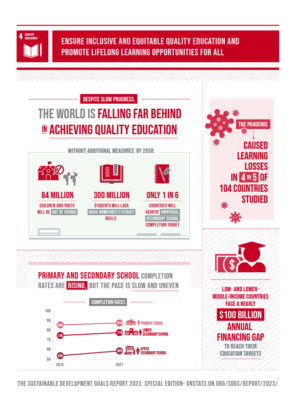
This is not limited to schools globally; similar problems have arisen domestically.
A survey of 800 schools in 2022 found that: “The pandemic years have taken a dramatic toll on the nation’s public schools … affecting staffing, students’ behavior, attendance, nutrition, and mental health.”
- The socio-economic status (SES) achievement gap, already quite high in the U.S., increased due to COVID-19. Wealthier parents could provide increased support to children out of school, while those with lower incomes were not.
- Decreases in future earning potential were affected both by SES and by the age of the child, with younger students losing more potential income.
- Bigger educational losses were seen in math outcomes, compared to language.
- The Federal Reserve Bank of Richmond found significant outcomes beyond educational losses, some of which have been mentioned elsewhere in the profile. These included “rising mental health concerns, lower levels of engagement, reports of violence against children, rising obesity, increases in teenage pregnancy, rising levels of chronic absenteeism and dropouts, and overall deficits in the development of socioemotional skills due to social isolation from networks and peers.”
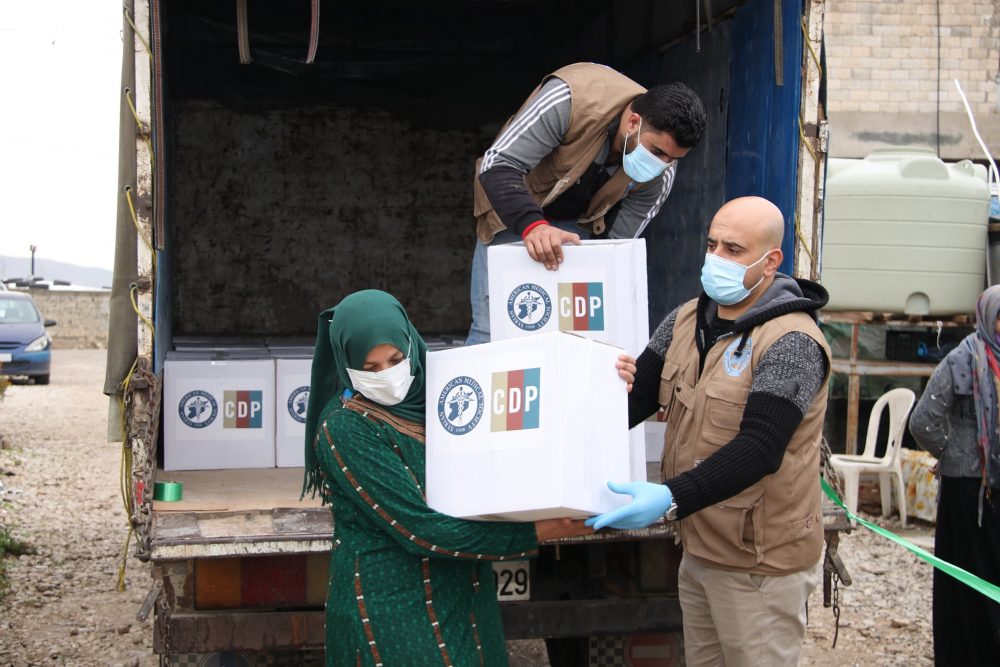
The CDP COVID-19 Response Fund provided an opportunity for donors to meet the ongoing and ever-expanding challenges presented this virus. As of August 2024, we have distributed more than 200 grants totaling $44,693,297 to more than 170 organizations working in the U.S. and abroad, including grants to fund projects in collaboration with other CDP funds.
Contact CDP
Philanthropic contributions
If you have questions about the COVID-19 Response Fund, need help with your disaster-giving strategy or want to share how you’re responding to this disaster, please contact development.
(Photo: Syrian American Medical Society (SAMS) distributes hygiene kits in the Beka’a Valley in Lebanon to assist refugees with personal protection and household sanitization. Source: SAMS)
Recovery updates
If you are a responding NGO or a donor, please send updates on how you are working on recovery from this crisis to Tanya Gulliver-Garcia.
Note: If you are an individual within the U.S. or Canada affected by this disaster, we encourage you to call your local 211 to see what resources are available in your community.
We welcome the republication of our content. Please credit the Center for Disaster Philanthropy.
More ways to help
We encourage donors to focus on funding local NGOs. As with all disasters, this epidemic started and will end locally. Local NGOs that in the areas of housing/homelessness, health care, nutrition/food support, mental health, domestic violence, care for seniors, etc., have seen an increased need for their services. They need flexible, unrestricted funds that can provide additional dollars to deal with the impact of the crisis. Support operating funds and capacity building when possible, to strengthen the organization’s ability to plan for future pandemics or disease outbreaks.
As of August 2024, CDP has distributed more than 200 grants from the COVID-19 Response Fund. These grants included:
- Concern Worldwide was awarded $100,000 to support Afghan communities in disaster-prone rural areas of Takhar province in the Northeast region of Afghanistan in building resiliency to withstand the ongoing effects of the COVID-19 pandemic and recover from the economic impacts of COVID-19 by increasing access to water back to pre-pandemic levels. Read the impact story about this grant here.
- Conexión Américas was awarded $70,000 to meet the needs of Tennessee’s Latinx, immigrant and refugee communities in a linguistically and culturally responsive way. Response focused on food security, emergency economic assistance, health access, small business support and digital inclusion.
- Internews was awarded an additional $450,000 for strengthening Indigenous, Afro-descendant and last-mile health networks, and building trust around COVID-19 vaccines to contribute to ensuring better information, equitable access and greater uptake through establishing healthier information ecosystems in Bolivia, Colombia and Peru. Read the impact story about this grant here.
- Migrant Clinicians Network (MCN) received $200,000 to strengthen the prevention and mitigation of COVID-19 in the United States and its territories through capacity building and education of community health workers, clinicians, community advocates and teachers. MCN has a focus on equity for rural, migrant and other historically marginalized communities. Read the impact story about this grant here.
Related resources
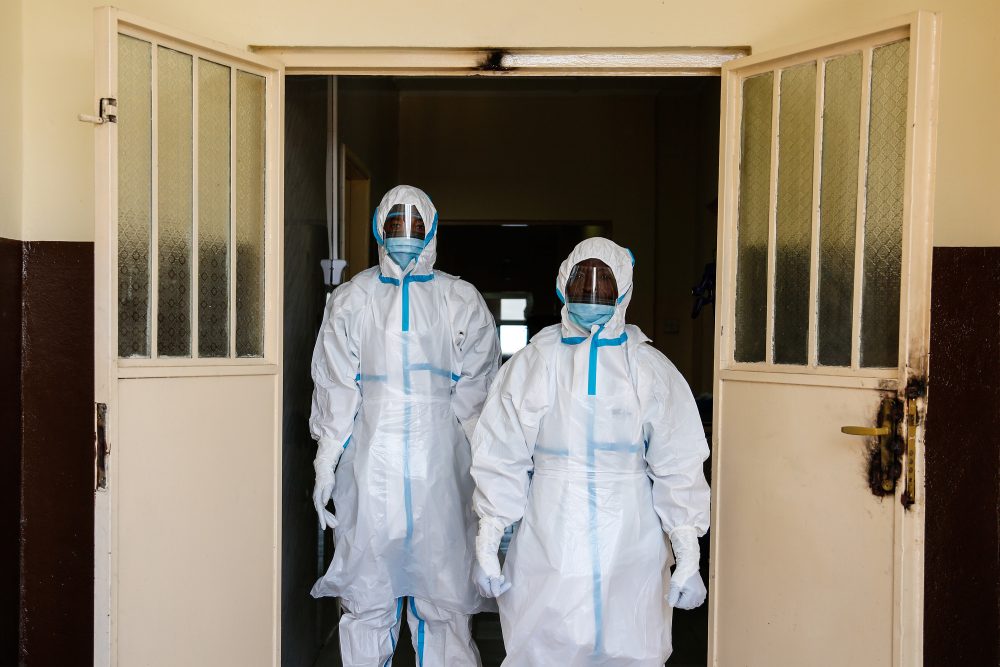
Pandemics and Infectious Diseases
A pandemic is the sustained transmission of an infectious disease across a wide area of one country or across international borders. Pandemics may be either naturally occurring or the result of human intervention through genetic engineering or biological warfare.

Is your community prepared for a disaster?
Explore the Disaster Playbook